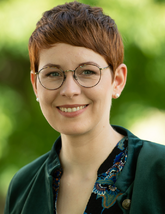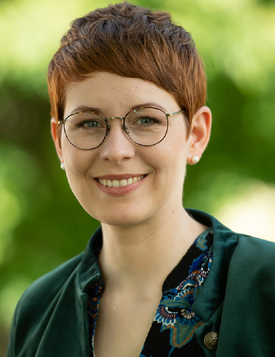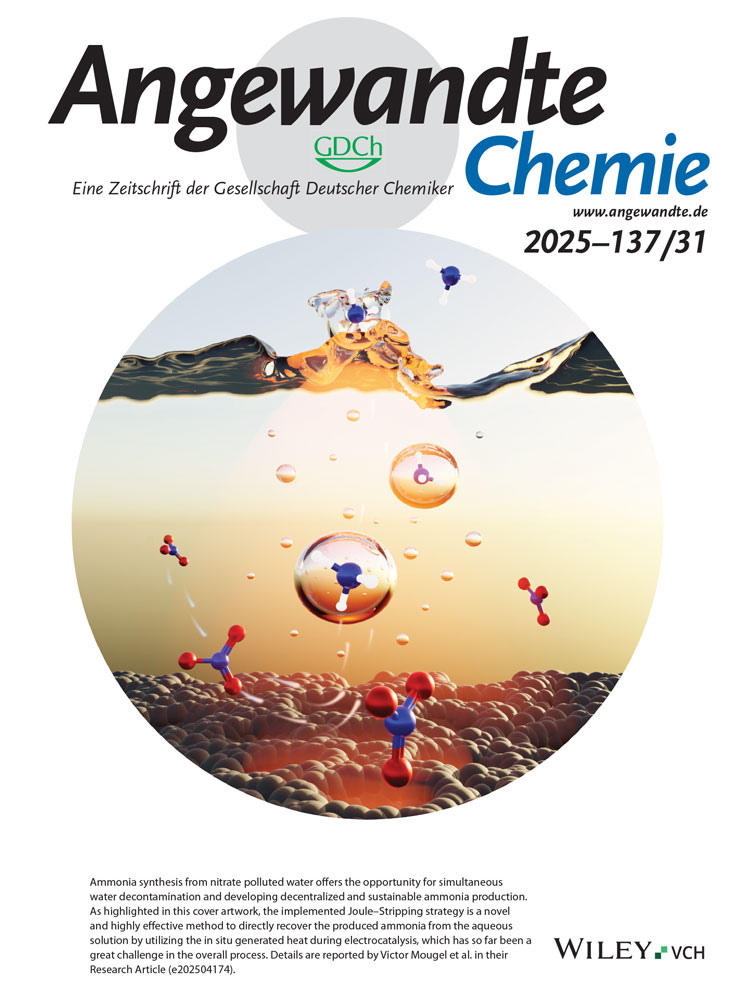Larissa K. S. von Krbek
Graphical Abstract
“I'm always in a good mood when I am discussing science with my wonderful students… My science “heroes” are the current and former members of the Women in Supramolecular Chemistry (WISC) board who support each other and others while still having to work on their own academic careers…”
Find out more about Larissa von Krbek in her Introducing… Profile.
 |
Position, Location: | Emmy Noether Group leader at the Kekulé-Institute for Organic Chemistry and Biochemistry, University of Bonn (Germany) |
| Homepage: | http://www.krbekgroup.com | |
| ORCID: | orcid.org/0000-0002-4278-5235 | |
| Education: | 2007–2010, BSc with Hans-Ulrich Reissig, Freie Universität Berlin (Germany) 2010–2012, MSc with Christoph A. Schalley, Freie Universität Berlin (Germany) 2012–2016, PhD with Christoph A. Schalley, Freie Universität Berlin (Germany) 2017–2020, Postdoc with Jonathan R. Nitschke, University of Cambridge (UK) |
|
| Research: | Photoswitches, supramolecular chemistry, and systems chemistry | |
| Hobbies: | Baking (and cooking), yoga, running, and spending time with my family |
Chemistry/science is fun because you have the opportunity to discover how a tiny part of the world works.
My favorite name theorem is Heisenberg's uncertainty principle. Isn’t it amazing that you cannot know a particle's momentum if you know its location, and vice versa?
My science “heroes” are the current and former members of the Women in Supramolecular Chemistry (WISC) board who support each other and others while still having to work on their own academic careers.
A turning point in my career was attending my first international conference in Telluride (CO, USA), focused on molecular motors, rotors, and switches. It was such a rewarding experience to connect with outstanding researchers, many of whom I'm proud to call friends today. During the conference, I had the pleasure of hearing Rainer Herges speak about this fascinating photoswitch: the diazocine.
My favorite aspect of attending conferences is hearing about exciting research firsthand, catching up with old friends during the breaks, and making new ones.
The most challenging aspect of refereeing is finding the time to truly honor the hard work and dedication that authors put into their manuscripts.
The most important feature of a good working environment is having regular lunch and coffee breaks, where we can chat about life and chemistry together as a group. That said, I am still working on establishing regular coffee breaks in my group, because my first cohort of students, who did not drink coffee, sadly did not see the point in having them.
When I go into the lab, my students are often surprised by what kind of ghoul has made its way out of the office! They eagerly share their current research with me or excitedly show off their particularly colorful reactions, and both never fail to brighten my day.
The most important quality of a mentor is allowing students to thrive, providing them with room to explore their ideas, and being the safety net they can rely on when things become challenging.
I'm always in a good mood when I am discussing science with my wonderful students. It's so rewarding to be proven wrong or to learn something new from them!
The best advice I have ever been given is to thoughtfully choose your first PhD student. I feel so fortunate to have Max on my team, as he took a leap of faith on the new group leader joining the institute.
I lose track of time when I am working on graphics. My wonderful students put so much effort into their drafts, and I just can't help but dive in and make them even better.
My favorite place on earth is home, and it truly feels like home wherever our little family is together.
My favorite drink is a nice cup of Yorkshire tea (decaf), even though it is a bit tricky to get here in Germany.
The last nonscientific book I have read is Why? Why? Why? Trains (Ravensburger). I've probably read it about 42 times with my two-year-old in the last month!
Behind the Science
Creating diazocine-containing metallo-supramolecular structures has been a long-standing goal of mine. Max kindly took on the project, and after familiarizing himself with the synthesis of these elusive photoswitches, he had the brilliant idea for the 2,8-asymmetric substitution pattern, bringing the helicate to life. Understanding the significance of its self-sorting and using the molecular ratchet to accelerate metal exchange required extensive experiments and many stimulating discussions. Max discovered that the ratchet could be operated autonomously after submitting an NMR sample of pure helicate, which sat in the autosampler by the window on a sunny day for a while.
The author presented on this page has published her first article as a submitting corresponding author in Angewandte Chemie:
“Light-Driven Ratchet Mechanism Accelerates Regioselective Metal-Cation Exchange in a Heterobimetallic Helicate”: M. J. Notheis, G. Schnakenburg, L. K. S. von Krbek, Angew. Chem. Int. Ed. 2025, 64, e202508952.
Internationale Ausgabe: DOI: 10.1002/anie.202514533
Deutsche Ausgabe: DOI: 10.1002/ange.202514533





